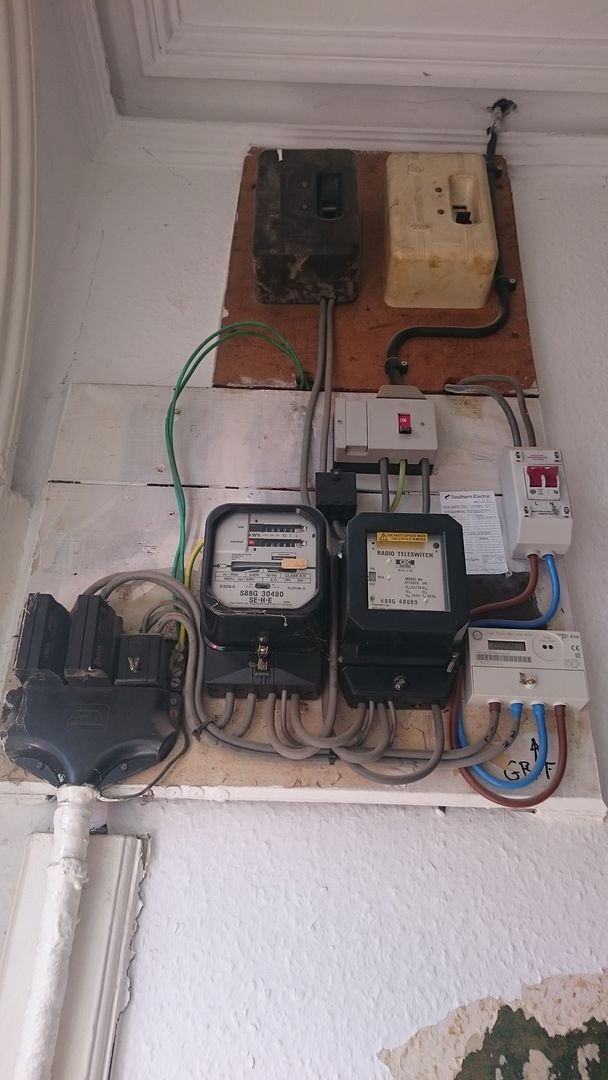- Joined
- 14 Sep 2015
- Messages
- 44
- Reaction score
- 2
- Country

Need help in identifying the below please.
Connection 1:

Connection 2:

Connection 1:

Connection 2:





Why?Thanks guys. I should have been more clear - wanted to know the number of phases.
Surely the only way to proceed is to determine what the requirements will be for the finished conversion, and get that installed by the DNO?Of course I will be getting an electrician in at the right stage, but before that just sorting the actual supplies first.
No. 1 is currently a house with 2 supplies (up and down).
No. 2 is currently 2 flats.

Why?Thanks guys. I should have been more clear - wanted to know the number of phases.
Surely the only way to proceed is to determine what the requirements will be for the finished conversion, and get that installed by the DNO?Of course I will be getting an electrician in at the right stage, but before that just sorting the actual supplies first.
No. 1 is currently a house with 2 supplies (up and down).
No. 2 is currently 2 flats.
I assume the house was divided into two separate dwellings at one time. Looks like 80A meters installed at the moment, and but presumably you're getting the supplier to consolidate this to one meter?No.1 will remain as a house and I wanted to check if the existing supply can cope with more than one electric shower.
The DNO? The DNO is responsible only for the supply up to the cut-out. From there to up to and including the meter is the responsibility of your supplier (whoever that may be). After that it's the owner's responsibility.No. 2 is done - separate 7 way panel all installed by the DNO.
So are you saying there's another supply to the property elsewhere? Or is this actually all in the same building as the first one and you're planning on putting everything on that No. 1 supply?I just wanted to know what the existing supply was and if I should keep it for the future (just in case of future expansion) or just get the DNO to remove it.
Probably not.I wanted to check if the existing supply can cope with more than one electric shower.

No.Can someone tell me by looking at the picture if the current incoming supply could cope with that?

No.Can someone tell me by looking at the picture if the current incoming supply could cope with that?
A single phase supply can do 1 electric shower. Perhaps 2 if there were no other electrical heating or cooking appliances in use, meaning it was all gas. However if gas is available that should be used for water heating and showers as it's 4x cheaper than electricity.The house has 2 metres at the moment but I would like to consolidate into one. It will be split over 3 floors and have at least 2 electric showers. Can someone tell me by looking at the picture if the current incoming supply could cope with that?

No. 2
The DNO has installed a new ground cable and 7 way panel for 5 flats.
The picture posted is of the existing set-up which I can either keep as dormant or have removed. I just wondered if it would be worth keeping for a future flat in that location.

If you need to find a tradesperson to get your job done, please try our local search below, or if you are doing it yourself you can find suppliers local to you.
Select the supplier or trade you require, enter your location to begin your search.
Are you a trade or supplier? You can create your listing free at DIYnot Local
